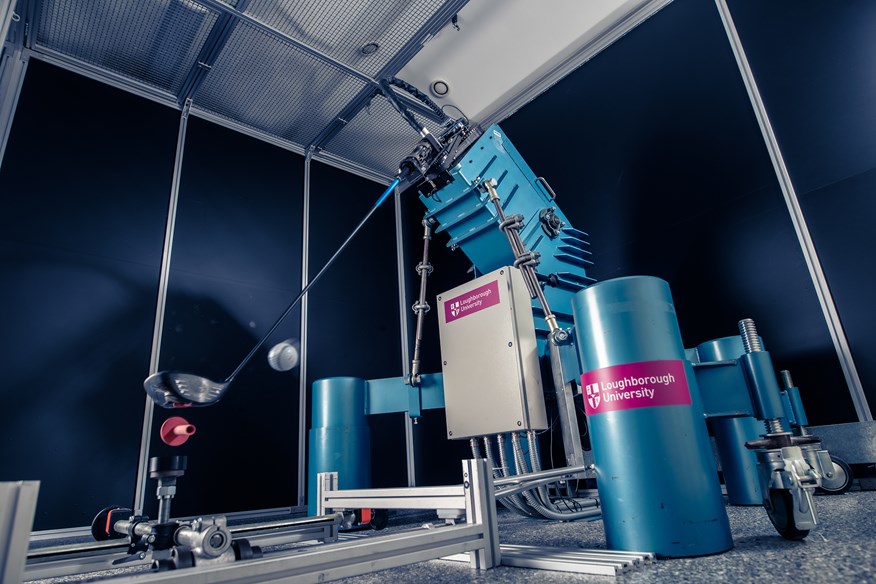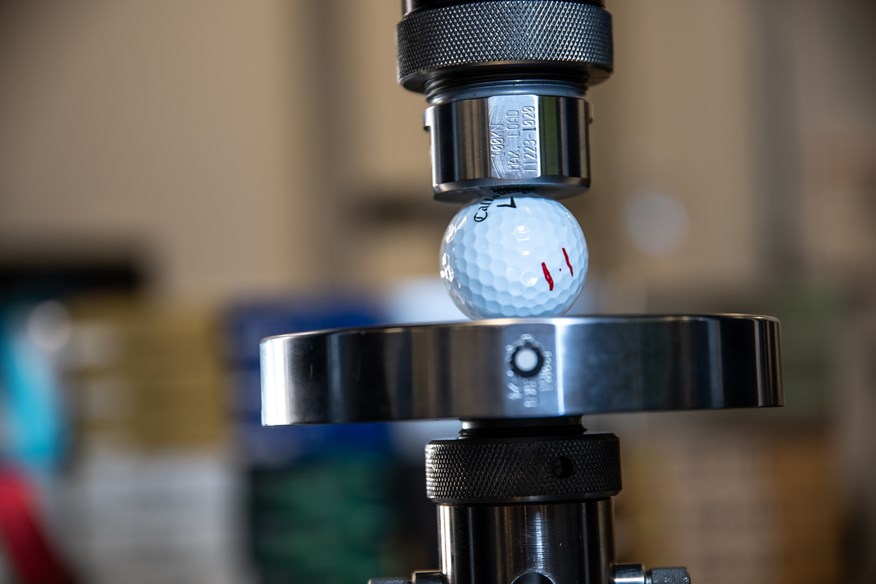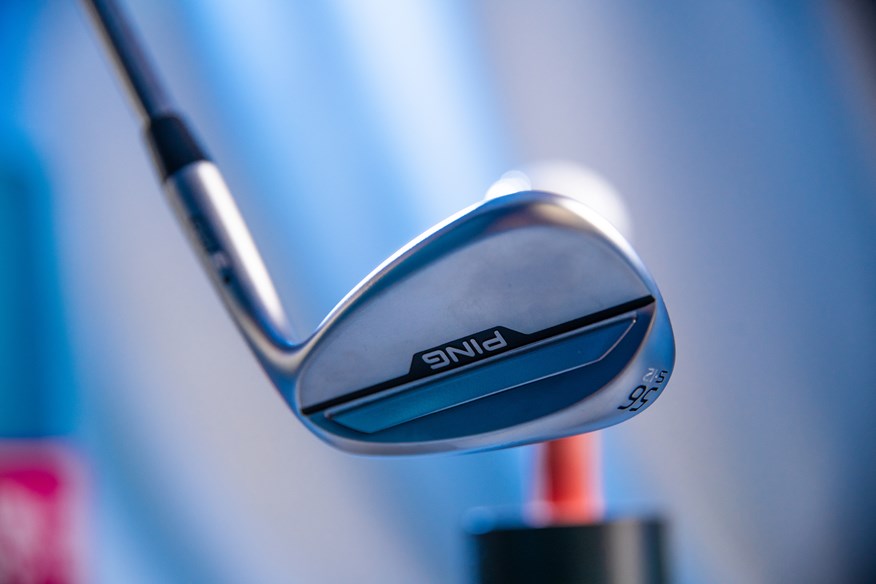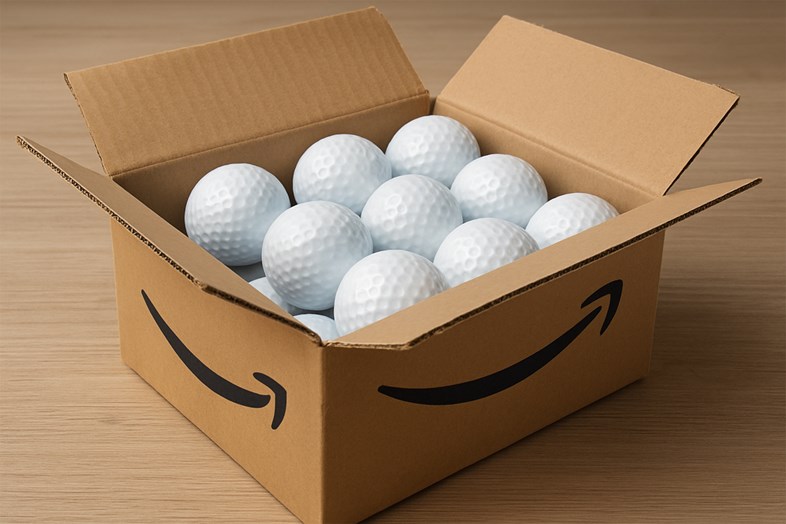We put the Callaway Supersoft – Amazon’s best-selling golf ball – through its paces on a $100k swing robot to see if it warrants its popularity.
Gone are the days when buying golf balls meant picking up boxes in the pro shop or retail store, reading the blurb on the back, and pretending you knew what you were looking for.
Nowadays, you’re only a few clicks away from having a fresh box of balls delivered to your door.
Amazon has become a great place to buy golf balls. The prices tend to be competitive, there’s a great range of choice available, and the convenience is hard to beat.
But the most popular golf ball on Amazon is something of a surprise. While the Titleist Pro V1 reigns supreme in golf shops and at golf clubs, a different ball rules the roost online.
In both the UK and the US, the Callaway Supersoft is the best-selling golf ball on Amazon.
But why is it so popular? And does its performance live up to its popularity? Let’s find out…
Best Callaway golf ball for low-spin
Pros & Cons Specs Features
Pros Ultra soft feelLong with low spin flightGreat value with premium feel Cons Only really suitable if you need to generate less spin Carry distance (yds) Driver 114mph – 266.6 | Driver 93mph – 206.5 | Driver 78mph – 160.8 | 7-iron – 159.7 Ball speed (mph) Driver 114mph – 160.1 | Driver 93mph – 132.3 | Driver 78mph – 112.5 | 7-iron – 108.4 Backspin (rpm) Driver 114mph – 2,599 | Driver 93mph – 2,334 | Driver 78mph – 2,060 | 7-iron – 3,881 | Pitch – 5,500 Launch angle (°) Driver 114mph – 11.5 | Driver 93mph – 13.3 | Driver 78mph – 14.8 | 7-iron – 22.1 | Pitch – 31.9 Descent angle (°) Driver 114mph – 35.1 | Driver 93mph – 30.7 | Driver 78mph – 26.9 | 7-iron – 44.4 | Pitch – 38 Peak height (yds) Driver 114mph – 29.9 | Driver 93mph – 21.5 | Driver 78mph – 15.6 | 7-iron – 29.8 | Pitch – 7.8 Compression (psi) 41 Hyperelastic softfast coreHybrid coverHex aerodynamics332 dimples2-Piece constructionAvailable in white, yellow, pink, green, orange, and redAlternative models include Splatter 360° and Limited Edition patterns Why is the Callaway Supersoft so popular?
Callaway are well-known for making great golf equipment and some of the best golf balls available. The Supersoft might not be their flagship model, but casual and committed golfers alike take comfort in buying into one of the game’s biggest brands.
While premium golf balls can cost over $50 / £50 per dozen, the Supersoft typically retails for around half that.
The Supersoft is available in a variety of different colors, patterns, and alignment aids.
The Supersoft cover is impressively hard-wearing. You’ll probably lose one before it wears out.
With a compression of just 41, the Supersoft is one of the softest golf balls on the market. Lots of golfers are attracted by the idea of a ‘soft’ golf ball, although our testing revealed softness can come at the expense of performance – read why you should stop buying ‘soft’ golf balls here.
It’s easy to see why the Callaway Supersoft is so popular, but the question remains: how does it perform?
Callaway Supersoft: performance test
To find out whether the Callaway Supersoft merits its popularity, we tested it against 61 other golf balls – from budget two-piece models to the most expensive tour-level balls – using a $100k swing robot.
This machine delivers exactly the same strike every time, which means the only variable in our test was the ball itself.
We tested every ball across five different shot types to get a complete picture of performance:
114mph driver – PGA Tour average speed
93mph driver – LPGA Tour and typical male club golfer
78mph driver – average female club golfer speed
80mph 7-iron – club golfer average
56° wedge – hitting a 40-yard pitch shot
 Driver – 114 mph swing speed
Driver – 114 mph swing speed
Ball speed: 160 mph (ranked 53rd)
Carry distance: 266.6 yards (50th)
Spin: 2,424 rpm (61st)
No surprises here – the Callaway Supersoft clearly isn’t built for big hitters.
At higher swing speeds, two-piece balls like this simply can’t keep up with premium three-, four-, and five-piece models. The top 18 balls for carry distance at this speed were all multi-layer tour balls, while the shortest six were all two-piece.
Golfers who generate too much spin may be intrigued by the fact that the Supersoft delivered the second-lowest spin rate of every ball tested, but fast swingers looking to reduce spin would be better served by the likes of the Titleist Pro V1x Left Dash and Titleist AVX, which generated similarly low spin but substantially more carry distance.
Driver – 93 mph swing speed
Ball speed: 132.3 mph (51st)
Carry distance: 206.5 yards (47th)
Spin: 2,334 rpm (62nd)
It was a similar story at average swing speeds. The Supersoft was the lowest-spinning ball of all 62 models tested but didn’t deliver much to shout about in terms of ball speed or carry distance.
The Titleist Velocity and TaylorMade Distance were within 150 rpm of spin and delivered a little more carry distance.
Driver – 78 mph swing speed
Ball speed: 112.5 mph (47th)
Carry distance: 160.8 yards (19th)
Spin: 2,060 rpm (62nd)
At slower swing speeds, the Callaway Supersoft performed much better – ranking 19th of 62 balls for carry distance.
It was the lowest-spinning ball by more than 100 rpm, which means it could be a good option if you’re a slow swinger who generates too much spin.
Less spin will also mean less curvature on your shots, which will appeal to those battling a slice or hook.
 Irons (7-iron at 80mph)
Irons (7-iron at 80mph)
Ball speed: 108.4 mph (44th)
Carry distance: 159.7 yards (2nd)
Spin: 3,881 rpm (61st)
Descent angle: 44.4° (56th)
If you’re looking for more distance on your irons, the Callaway Supersoft delivers. It was the second-longest ball with a 7-iron – more than seven yards longer than some premium golf balls.
But there’s a catch.
The Supersoft’s spin is extremely low, with only the Titleist Velocity generating less spin. The low spin, combined with a shallow descent angle, means shots will roll out more on landing. That’s not ideal if you’re trying to hit and hold a green.
If you want more balance between iron distance and stopping power, balls like the Seed SD-02, Maxfli StraightFli, Bridgestone e12 Speed, and TaylorMade TP5x were all within 2.5 yards of the Supersoft and all had significantly higher spin rates and steeper descent angles.
 Wedges (40-yard pitch shot)
Wedges (40-yard pitch shot)
Spin: 5,500 rpm (51st)
Peak height: 7.8 yards (7th)
Descent angle: 38° (5th)
If you’ve come this far, you probably won’t be shocked to hear that the Callaway Supersoft was one of the lowest-spinning balls when it came to a 40-yard pitch shot.
It flew higher than most, which gave it a respectable descent angle, but it still won’t be as easy to control on short shots as many other balls.
It was generally premium balls that excelled for spin on the wedge shot, though the Titleist Tour Soft – another two-piece ball – delivered 6,075 rpm, ranking 6th of all 62 balls for wedge spin.
The bottom line: Should you buy the most popular ball on Amazon?
It’s easy to see why the Callaway Supersoft sells by the truckload. It’s from a trusted brand, it feels good, it’s affordable, and it comes in every color under the sun.
It’s a good fit for slower swingers, beginners, and high-handicappers who want a soft feel, straight flight, and consistent performance without breaking the bank.
However, if you swing it with more speed, want extra control into greens, or rely on wedge spin to save pars, you’ll quickly run up against its limitations.
For those players, balls like the Wilson Staff Model X, Srixon Z-Star Diamond, Vice Tour, or even the Bridgestone e12 Speed will offer more versatility and better all-round performance.







